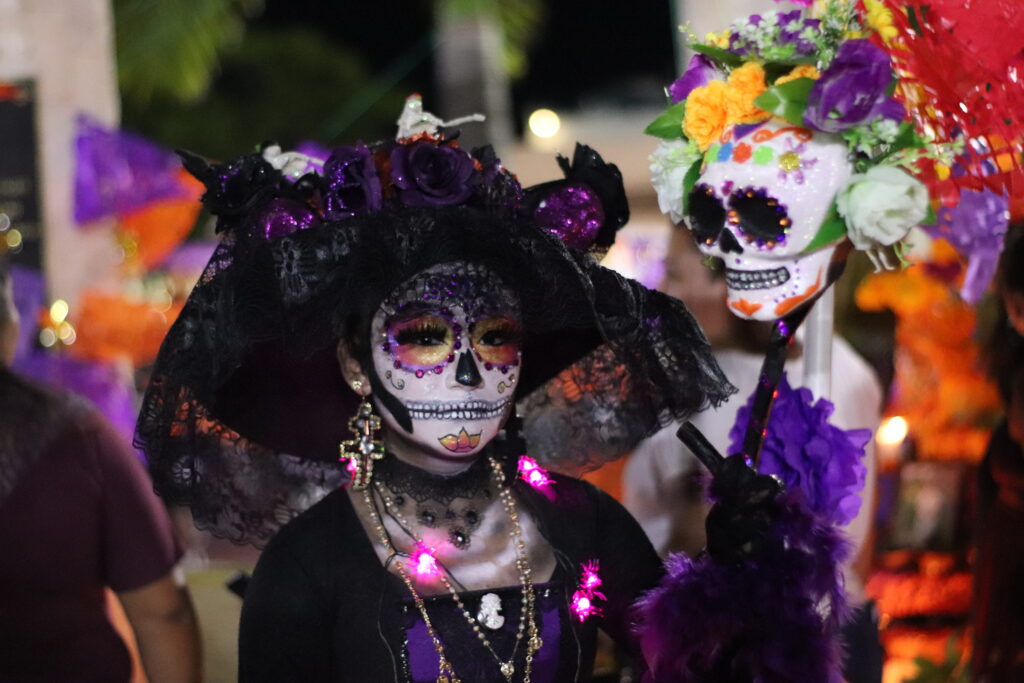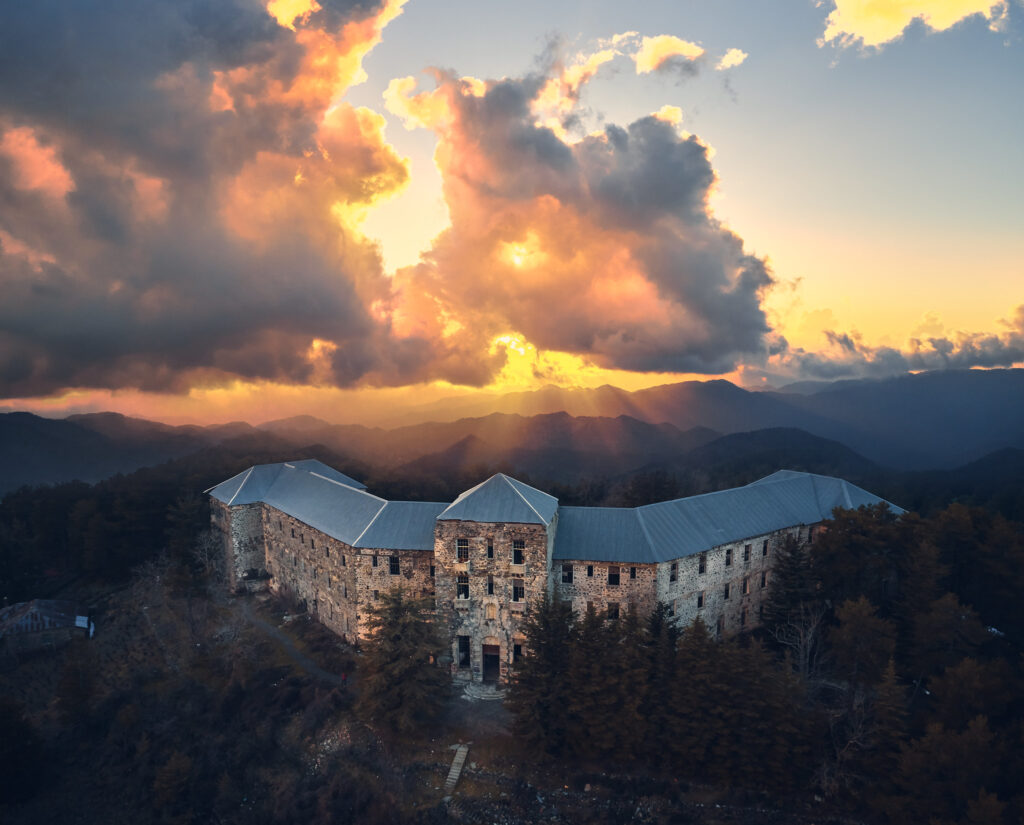Where is Cyprus’ haunted hotel? Why are orange and black the colours of Halloween? Who still walks the halls of the White House? And what makes black cats an adoption risk at this time of year? ALIX NORMAN finds out more
This Hallowe’en, as the dead walk amongst the living, we’ve answered 10 of the season’s creepiest questions. Read on – if you dare!
Love in the mirror
Back in the 18th century, Halloween was believed to be the best time to divine one’s husband-to-be. Mirrors at midnight were the key: as the clock struck 12 on October 31, desperate damsels would light a candle before a mirror in the hope of seeing the reflection of their future partner. For the same reason, a few of the more daring ladies would also gaze into a glass while walking backwards down the stairs. (No doubt a good way to meet a dashing doctor!) But apples also played a part: apparently, throwing an apple peel over your shoulder on All Hallows Eve would reveal the initials of your intended. Bet Halloween was a nerve-wracking time for all the Sam Scotts, Steven Spencers, and Simon Smiths!
Animal Magic
Old English folklore is packed with animal superstition, and it all amps up come Halloween. Spotting a bat on Halloween was considered particularly ominous: if one flew around the house, it suggested the imminent death of a resident. On the other hand, seeing a spider on October 31 meant a deceased loved one was watching over the home. But it’s black cats that are most associated with this time of year. Believed to bring bad luck (Satan was thought to take the form of a feline when conversing with witches), today black cats are an adoption no-no at Halloween: most shelters refuse to release any black cats during the week prior for fear they’ll be sacrificed in arcane rituals!
Flying Broomsticks
Ever wondered why witches have broomsticks? Apparently, in Medieval times, elderly women unable to afford a walking stick would substitute a broom when out and about. Tenuous? Yes. But there’s proven evidence to suggest that certain ladies of the era took to rubbing a preparation of hallucinogenic herbs on their nether regions (where the mucous membranes quickly absorbed the ointment). Thanks to the potion’s toxicity, they’d spend the next few hours truly believing they were soaring through the sky. Honestly, you couldn’t make this stuff up if you tried!
Chilling Costumes
Today, Halloween is an almost exclusively commercial holiday. But its roots go back 2000 years to the ancient Celtic festival of Samhain, which celebrated the end of the harvest. As summer died and winter set in, the boundaries between this world and the next were believed to blur, and the dead would come back to life to wreak havoc among the living. The best way to deter the spirits’ interest was to appear non-human for the night – hence the original witch, ghost, and ghoul costumes.
Sweet Sales
Trick or treating is big business at this time of year, especially in the States. Americans spend almost $7 billion on Halloween each year, of which 2.6 billion goes on candy alone. The standard haul (based on an average pillowcase, which can contain a whopping 1,600 sweets) clocks in at between 3,500 and 7,000 calories and contains almost 700 grammes of sugar (equal to 170 sugar cubes). A 45-kilo child would have to walk continuously for almost two days, or spend a 14.5 hours playing basketball to burn off that amount!
Petrifying Pumpkins
Jack o’lanterns are another tradition with their roots in the past. Named for the Irish legend of Stingy Jack – a drunkard who bargained with the devil and was doomed to roam the dark for ever with only a hollowed turnip to light his way – carved pumpkins have been around for hundreds of years. Originally, the grotesque faces were said to ward off evil spirits. Today, they’re a ubiquitous autumn decoration, even in Cyprus: CyHerbia’s annual Pumpkin Carving Festival in Avgorou attracts hundreds of ghoulish guests!
Ghosts and Ghouls
From Balmoral (Elizabeth II is said to have spotted the ghost of Queen Victoria’s paramour, John Brown, more than once) to the White House (Eleanor Roosevelt reported she’d seen Lincoln’s ghost in the halls) many of the world’s oldest buildings are plagued by phantoms. Here in Cyprus, we have a heavily haunted hotel. Hidden amongst the pine forests of Prodromos, the Berengaria was once a luxurious retreat catering to the likes of Winston Churchill and the King of Egypt. But when the owner died, trouble struck (or so it’s said)… His three squabbling sons purportedly ran the hotel into the ground, before meeting their ends (cue mysterious circumstances cliché), one after the other. Add the suicide of a former manager and the drowning of a female guest in the swimming pool, and there’s enough to support the ghostly reports of screams and cries emanating from this long-abandoned building.
Fear and Loathing
Halloween is an intentionally scary time. But for those suffering from samhainophobia, it’s truly terrifying. Defined as a persistent, abnormal, and unwarranted fear of Halloween, it numbers among the rarer phobias, but has been around for centuries thanks to the event’s association with sacrifices, darkness and death. More recent phobias include Christougenniatikophobia (a full-blown fear of Christmas, which often overlaps with a fear of gatherings or parties); nomophobia (fear of not having your cell phone); and chloephobia).
Creepy Colours
Black and orange are universally agreed to be the colours of Halloween. But why? Well, in that October 31 is the traditional end of the season, orange marks the crops of the harvest and the turning of the leaves, while black symbolises the death of summer. More modern colour palettes also include green and purple. The former represents all things monstrous (the green skin of the wicked witch in the Wizard of Oz played a huge part here), and the latter has long been associated with intuition (think the seventh chakra), witchcraft, and the night sky in winter.
The Day of The Dead
Dia de los Muertos is often confused with Halloween. But though the two take place at roughly the same time of year, the former is a happy occasion that honours the lives of those who have gone before, while the latter focuses on the more grisly or frightening aspects of death. The original Day of the Dead celebrations stem from month-long Aztec rituals involving rather too many skulls. But with the coming of the Spanish conquistadors in the 16th century, these gruesome rites were merged with the festival of All Saints to include Catholic masses and prayers.
Movie Magic
The film Halloween is staple viewing at this time of year. But the terrifying mask worn by the homicidal pyscho Michael Myers has an unusual backstory. In the original 1978 picture, the team were on a tight budget. So production designer Tommy Lee Wallace picked up two masks from a Hollywood Boulevard magic shop: a clown mask and William Shatner as Captain Kirk in Star Trek. The first was deemed just slightly scary. But when the second was turned inside out and painted white, it became truly terrifying, and served as the killer’s face for the entire film. The rest is spine-tingling history!




